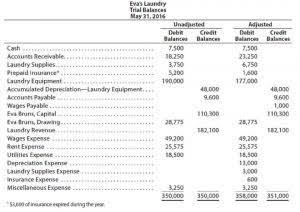
Understanding the relationship between the operating cycle and working capital is crucial for any business aiming to optimize its financial performance. By managing the components of the operating cycle effectively, a company can minimize its need for working capital, improve liquidity, and enhance its overall financial health. To illustrate these points, cash flow consider a retailer like Zara, known for its fast fashion model. Zara’s efficient inventory management and responsive supply chain allow it to have a very short operating cycle.
Evaluating Working Capital Effectiveness
Remember, the goal is not merely to reduce inventory but to strike the right balance for sustained growth. One factor that is particularly operating cycle important among these is working capital management. An effective working capital strategy can help the business increase its profitability and earnings through the efficient use of its resources.
Management of Working Capital
The garments are shipped abroad after manufacturing, which takes about 30–45 days. However, depending on the agreement, payment from the foreign buyer may only be received 60–90 days after shipment. Having less account receivables can also better many other ratios for the business, which are important for investors who may want to provide money for funds. Any negative effects from your operating cycle on other aspects of your business may reflect badly on your business’s future profitability. Although the operating cycle formula is straightforward, diving deeper into the calculations that lead to the DIO and the DSO can lead to deeper insights.
- Evaluating the operating cycle would reveal how efficiently the assets of a company are being used.
- After all, efficient usage of a company’s assets has an important role in capital intensity, return on investment (ROI), and fixed overhead turnover.
- The operating cycle of a business is comprised of only the receivable days and inventory days.
- A business founder’s ability to make choices that will improve the firm depends on how well they comprehend the firm’s operating cycle.
- The operating cycle of working capital helps one measure the financial health of a company.
- Issues like production delays, excess stock, or lenient credit terms can all contribute to a longer cycle, affecting cash flow.
- An optimal cash conversion cycle can help the business run its operations smoothly and can also positively impact the profit and earnings of a business.
Examples of Operating Cycles
Generally, companies with longer operating cycles must require higher return on their sales to compensate for the higher opportunity cost of the funds blocked in inventories and receivables. The formula for calculating the operating cycle is the sum of days inventory outstanding (DIO) and days sales outstanding (DSO). By leveraging these technological tools, businesses can gain a competitive edge through enhanced visibility into their operating cycles. This visibility allows for proactive management of working capital, ensuring that companies can meet their financial obligations and invest in growth opportunities. The integration of these tools into business processes is no longer a luxury but a necessity for those looking to thrive in the fast-paced world of commerce. Through these case studies, it becomes evident that there is no one-size-fits-all solution to managing the operating cycle.

- You might have noticed that businesses talk about their operating cycle differently, depending on their industry or size, adding to the confusion.
- By implementing these inventory management strategies, you can effectively control your inventory and contribute to a shorter operating cycle.
- It is the task of Finance manager to manage the operating cycle effectively and efficiently.
- When a company buys goods and services on credit, the amount they have to pay falls under the category of ‘accounts payable’.
- It’s a balancing act that requires careful monitoring and strategic decision-making to optimize the cycle without compromising on sales quality or customer satisfaction.
- This can help the business avoid any loans that other business, with longer cash conversion cycle, have to take to finance their working capital needs.
An operating cycle is one more valuable tool in the toolkit of financial analysis that helps businesses make wiser, more informed decisions. Once businesses master this, they can better navigate the financial seas – a victory for all stakeholders. On the downside, a short cycle could mean the company is losing out on opportunities to use credit terms for its benefit. It might also mean the firm is not maintaining enough inventory to meet the potential surge in demand.

By default, a company’s cash is unavailable for other purposes during the cash cycle. For instance, the business can not invest funds in the financing activities once it has paid the cash to acquire inventory. An investment in inventory means that a company’s cash is bound until it sells the products. This means that whatever cash is locked up cannot be used for other purposes. As a result, maintaining cash and operating cycle as short as possible will benefit a company.
What Is the Cash Conversion Cycle (CCC)?
Operating cycle refers to number of days a company takes in converting its inventories to cash. It equals the time taken in selling inventories (days inventories outstanding) plus the time taken in recovering cash from trade receivables (days sales outstanding). Typically, Medical Billing Process a shorter operating cycle means a company converts inventory and receivables into cash more quickly. As a result, your business has enhanced liquidity, can meet its short-term obligations, and can invest in growth opportunities.


When a business converts inventory into cash, it is referred to as the operating cycle. And the cash cycle, on the other hand, accounts for the fact that a company does not have to pay its suppliers back immediately. Further, when a company operates on a shorter operating cycle, it keeps its cash for a shorter period in the business, which is generally more beneficial to cash flow and its overall benefit. These activities include inventory processing time, finished goods holding time, and accounts receivables from customers.
Create a free account to unlock this Template
So, a payment factor to the suppliers is added in the calculation of the cash conversion cycle. The performance of these calculations enables the business to calculate the operating cycle as these are the components of the cash conversion cycle. The business can improve its operating cycle by increasing the efficiency of the value-adding process.

